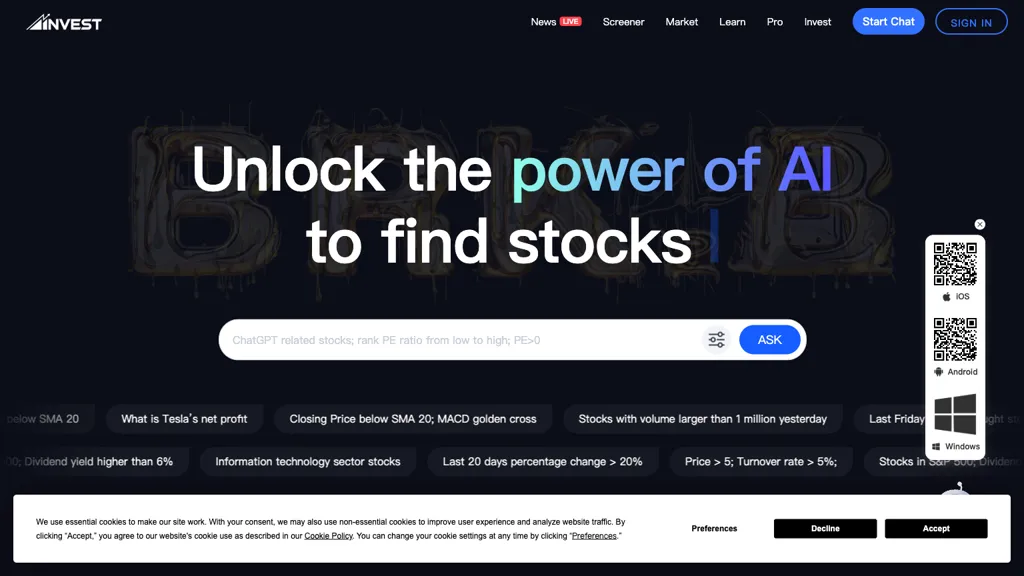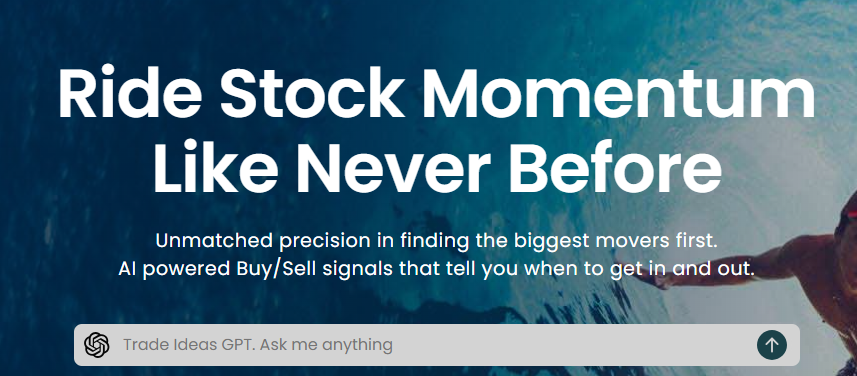AI trading platforms that predict/analyze stocks are known for their ability to customize strategies that meet the demands of their users. This allows them to adapt to specific trading objectives and conditions, such as the risk tolerance. A platform with flexible options for customization can dramatically increase the effectiveness of trading. Here are 10 top strategies to help you evaluate the platform's ability to customize your strategy:
1. Evaluate Pre-Built Strategy Templates
A variety of templates: Find out whether the platform has a variety of pre-built trading strategies (e.g. day trading or swing investing, long-term investment).
Usefulness: Determine the ease with which these templates could be modified to meet your requirements.
Performance history. Find out if the platform has historical data on performance for the prebuilt strategies.
2. Create a Custom Strategy
Drag-and-drop: Look for platforms that offer drag-and-drop interfaces for creating custom strategies.
Coding options: Find out whether the platform supports customized programming (e.g., Python, R, or proprietary scripting languages) for advanced users.
Flexibility: You should be able define the entry/exit criteria, risk management parameters and other elements that are crucial to your plan.
3. Check for Backtesting Capabilities
Historical data: Make sure that the platform provides sufficient historical data for backtesting your strategies.
A parameter that can be customized: Ensure you can adjust parameters during backtesting (e.g. indicators or timeframes).
Performance metrics - Check to see if your platform offers detailed performance indicators (e.g. the winning rate, Sharpe coefficient or drawdown) for all strategies tested back.
4. Evaluate Real-Time Strategy Testing
Paper trading: Make sure the platform offers the option of paper trading or simulation to test strategies in real-time without risking capital.
Live testing - Check that you are able to test strategies using small amounts to see how they perform.
Real-time adjustments: You should find out if your plan can be adjusted in real time according to market conditions.
5. Integrate Integration with Technical Indicators
Indicator library - See whether a platform offers an extensive library of technical indicators, such as moving averages (e.g. RSI), MACD or RSI.
Custom indicators: Make sure you are able to design or import custom indicators to implement in your strategies.
See if you are able to combine several indicators to make more complicated strategies.
6. Check for Risk Management Tools
Stop-loss/take-profit: Ensure the platform allows you to set stop-loss and take-profit levels within your strategies.
Position sizing - Check to see if you have any guidelines you can follow (e.g. an amount fixed or the percentage of your portfolio) to manage risk.
Risk-reward-ratio: Check the platform's support for setting risk/reward ratios for individual trades or trading strategies.
7. Evaluate Multi-Asset Strategy Support
Asset classes: Check that the platform supports different asset classes, such as stocks, ETFs and options.
Cross-asset Strategies: Find out whether it is feasible to develop strategies that combine various asset classes.
Market coverage: Make sure the platform is covered by markets you are interested (e.g. US and international markets or copyright, etc.).
8. Review Automation and Execution
Automated trading: Ensure the platform can automate execution of strategies based on defined rules.
Types of orders: Check to see if the platform permits different types of orders (e.g. limit, market) in the course of executing a strategy.
Latency: Verify that the platform has a low latency when trading, especially if employ high-frequency strategies.
9. Look for tools for optimizing your strategy.
Optimization of parameters: Ensure that the platform offers tools for optimizing strategy parameters (e.g. grid search and genetic algorithm).
Machine learning integration: Check if the platform uses machine learning to refine and optimization of strategies.
Assessment of scenarios: Determine whether your platform is capable of testing different strategies for various market scenarios, such as bullish, bearish, or volatile.
Review User Support for Community Reviews and Feedback
Feedback from users: Conduct user research to evaluate the effectiveness of the platform in the development of a customized strategy.
Community forums: Find out if the platform has an active community in which users share and discuss custom strategies.
Support resources: Check that the platform is equipped with tutorials, documentation, as well as webinars to help users create and optimizing strategies.
Bonus Tips
Trial period: Try the features of the platform that allow customization with a free trial or demo.
Scalability - Make sure that the platform you choose can handle your evolving trading strategies.
Customer Support: Verify that the platform offers assistance for any concerns related to strategy or issues.
If you follow these guidelines to evaluate the ability to tailor strategies for AI platforms for analyzing and predicting stocks, ensuring you choose a platform that aligns with your goals in trading and allows you to implement and refine your strategies effectively. A platform that offers a wide range of customization options can help you better adapt to market fluctuations and improve trading performance. View the most popular incite info for site advice including trading with ai, best ai trading software, investment ai, best ai stock, ai stock trading app, market ai, ai stock trading app, trading with ai, best ai stock trading bot free, best ai trading app and more.

Top 10 Tips For Evaluating The Social And Community Features Of Ai Stock Prediction/Analyzing Trading Platforms
It is crucial to know how users communicate, exchange knowledge and gain insights from each other through analyzing the community and social features of AI-driven prediction and trading platforms. These features enhance the user experience through providing helpful support. Here are the top 10 strategies for evaluating social and community features on such platforms.
1. Active User Community
Tips: Make sure the platform has a active user base that regularly engages in discussion, shares information and feedback.
Why is that a community that is active indicates an ecosystem that allows members to grow and learn from one another.
2. Discussion Forums & Boards
You can evaluate the quality of the quality of a message board by evaluating the activity levels.
Why: Forums allow users to discuss strategies, ask questions and share market trends.
3. Social Media Integration
Tips - Make sure that the platform can be linked with social media platforms (e.g. Twitter and LinkedIn) to share news and information.
Social media integration is a great way to improve engagement and provide real time market updates.
4. User-generated content
Consider features like the ability to write and publish content.
Why? User-generated content promotes collaboration and gives a range of perspectives.
5. Expert Contributions
Tip: See if there are contributions by experts in the field, like AI experts or market analysts.
Why: Expert insight adds credibility and depth to community discussions.
6. Real-time chat and Messaging
Tip: Check whether users can communicate with one another immediately using chat or real-time messaging.
Real-time interaction allows quick sharing of information and collaboration.
7. Community Moderation and Support
Tip - Assess the levels of support and moderation within your local community.
Why: Effective moderation ensures a positive and respectful environment, while support helps resolve user concerns quickly.
8. Webinars and Events
Tips: Check if your platform hosts live sessions, Q&As or webinars.
Why: These events provide opportunities to learn and direct contact with industry professionals.
9. User Review and Feedback
TIP: Look out for features where users are able to give feedback to the platform, its community and features.
How do we use feedback from users to discover strengths within the community and areas of improvement.
10. Gamification and Rewards
Tip: Check whether there are any gamification options (e.g. badges, leaderboards,) or rewards for participating.
Gamification is a great way to encourage users' engagement with the community.
Bonus tip: Security and privacy
Make sure that all community and other social features have robust privacy and safety measures to protect users' data and interactions.
If you take the time to thoroughly review these aspects and evaluating these aspects, you can decide if you think the AI software for stock predictions and trading offers a supportive and engaging community that can enhance the experience of trading and your understanding. Check out the top rated best ai stocks advice for more examples including invest ai, best ai stocks, stock trading ai, best ai penny stocks, best ai stocks to buy now, ai software stocks, best ai stocks to buy now, ai stock trader, investing with ai, chart ai trading and more.
